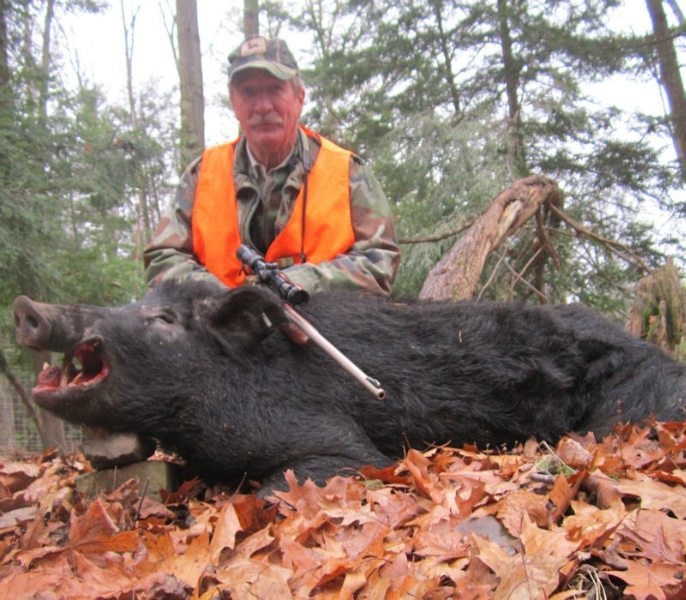
Wild boar hunting is one of the most thrilling and demanding hunts in North America. These animals are tough and often unpredictable. To consistently track, locate, and harvest boars takes more than luck, as you usually need skill, experience, and deep knowledge of the land.
As such, that’s why going on a guided boar hunt is such a game-changer. Our seasoned guides bring years of experience to every hunt, and we know how to track and hunt wild boar.
Understanding Boar Behavior and Movement
So what is the first rule of boar hunting? For starters, it’s vital you know your target. Wild boars are intelligent, adaptable, and constantly changing their behavior based on food sources, weather conditions, and human activity. Experienced guides know how to read these patterns and adapt accordingly.
Notably, boars are primarily nocturnal and do most of their moving and feeding at night or in low-light hours. A guide knows how to time your hunt around these movement patterns, and more often than not, early mornings and late afternoons are most productive.
Seasonal Shifts
During warmer months, boars gravitate toward water sources and thick bedding cover to stay cool. In colder weather, they move more during daylight, often in search of high-calorie food. Guides use these seasonal patterns to determine the best stand placement and timing.
Moreover, expert guides can identify fresh sign like tracks, scat, wallows, rubs, and rooting areas. These clues are often subtle to the untrained eye but provide a roadmap to where boars are spending their time.
Scouting Techniques Used by Professional Guides
Without question, scouting is the foundation of a successful hunt. Before you ever enter the woods, guides at Tioga Ranch have already spent weeks scouting the land, studying movement patterns, and placing trail cameras to monitor boar activity. Trail cameras help track herd movements and patterns. Guides use this data to identify prime hunting times and locations, improving your chances of a clean shot.
Reading Terrain and Cover
Boars prefer dense vegetation for bedding and cover. Guides understand how to read the land and predict where animals will be during different times of the day, often using maps, GPS data, and previous hunting history.
Wind and Scent Control
Wild boars have an incredibly sharp sense of smell, which is arguably their strongest defense. Guides strategically position stands and blinds based on wind direction and use scent-masking techniques to keep you undetected. One major advantage of a guided hunt is that your strategy is customized to your experience level, weapon choice, and hunting goals.
For more active hunters, guides may suggest a spot-and-stalk approach. This involves moving slowly through known boar territory, using terrain features for cover, and spotting animals before they detect you. This method demands stealth, patience, and being decisive.
Stand or Blind Hunts
Stationary hunts are another popular tactic. Guides place you in a ground blind or elevated stand in a high-traffic area based on scouting data. This method is especially effective for bowhunters or those seeking a calm, controlled environment for taking a shot. Notably, guides teach you where to aim for a quick, humane kill. The vital organs on a boar are located differently than in deer or elk, so precise shot placement is critical.
Tracking and hunting wild boars isn’t easy, but that’s what makes it so rewarding. But with the right guide, your hunt will surely be a success.
Our expert guides bring decades of experience and understand the behavior of wild boars and their habitat. To book a Pennsylvania boar hunting trip, contact us.
